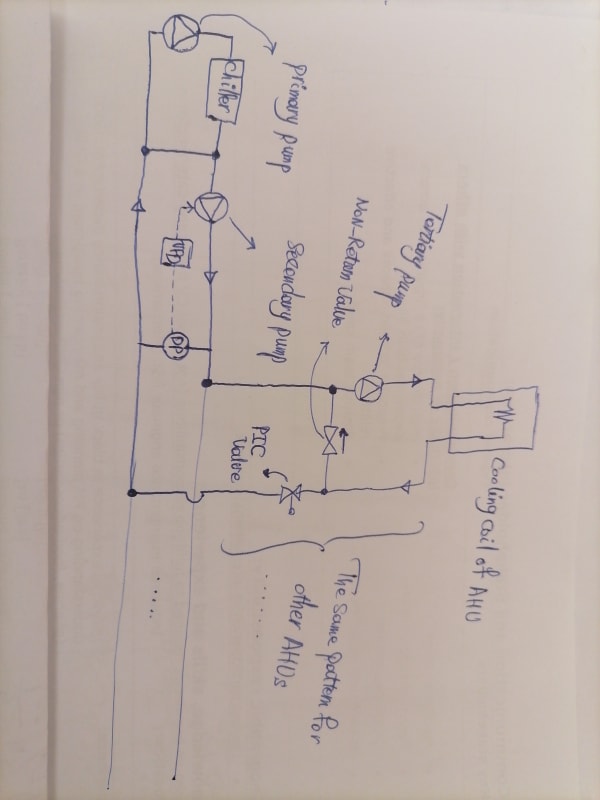Dear Experts,
I have some questions so could you please answer me.
1)What is function of pump in tertiary loop?
2)Is there any need to have a decouple line between secondary loop and tertiary loop or there is no need?
3)If there was VFD for secondary pump and a differential pressure transmitter in last component on the loop is it necessary
to have a bypass loop on the end of line or there is no need because pressure transmitter send signal to the VFD and the
secondary pump reduce it's speed and vice versa.
I will be appreciated to explain these because I am new in this field and above questions have occupied my mind a lot![[bigsmile] [bigsmile] [bigsmile]](/data/assets/smilies/bigsmile.gif)
Regards,
I have some questions so could you please answer me.
1)What is function of pump in tertiary loop?
2)Is there any need to have a decouple line between secondary loop and tertiary loop or there is no need?
3)If there was VFD for secondary pump and a differential pressure transmitter in last component on the loop is it necessary
to have a bypass loop on the end of line or there is no need because pressure transmitter send signal to the VFD and the
secondary pump reduce it's speed and vice versa.
I will be appreciated to explain these because I am new in this field and above questions have occupied my mind a lot
![[bigsmile] [bigsmile] [bigsmile]](/data/assets/smilies/bigsmile.gif)
Regards,

